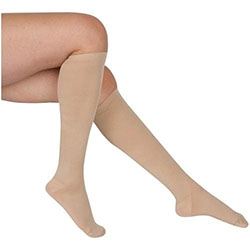
Did you know that your veins are responsible for the return of blood from your extremities back to your heart and compression hose can boost the return?
Let’s talk about how varicose veins form, then get into options for Varicose Veins Compression Stockings…
There’re two basic types of veins in your legs:
- Deep Veins
They run next to your muscles and carry ninety percent of all blood returned from your legs to your heart.
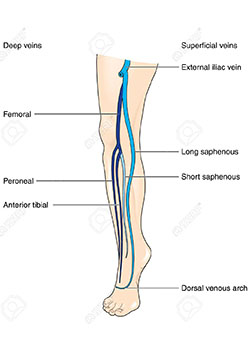
- Superficial Veins
They return the remaining ten percent of your blood from your legs. These veins are often visible, especially when ailing.
Malfunctioning superficial veins often cause pain, skin changes, heaviness, and even skin ulcerations.
- Perforator Veins
Connecting the deep and the superficial veins are a third type of veins, the perforator veins. Failing perforator veins can also cause significant complications.
What are Varicose Veins?
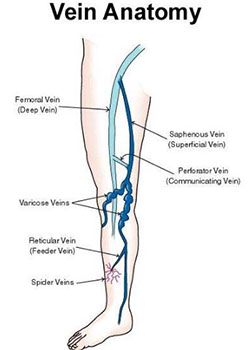
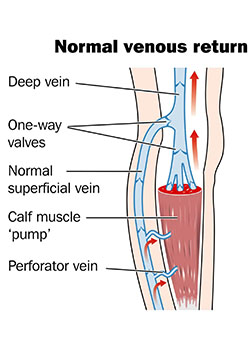
These are enlarged, dilated, twisted veins that are overfilled with blood. They usually occur with venous valve incompetence.
This is a condition that affects your superficial leg veins, but the veins that run deep in your leg muscle are not affected.
What Causes Varicosities?
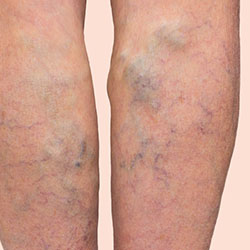
It’s believed that factors such as pregnancy, obesity, and prolonged standing contribute to the development of varicosities in the legs.
- Standing Erect for Long Hours
Prolonged standing leads to high pressure in the deep veins of the lower leg. As a result of the columns of blood pooling within them.
As the superficial veins feed into your deep veins through perforator veins, the pressure in the superficial veins tend to increase when standing.
The pressure increases further, if you are obese and there’s excess fatty tissue around your veins.
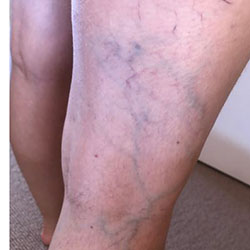
- Pregnancy-Induced
Why are they worse during pregnancy? The veins in your legs are enlarged from the increased blood volume as well as the impact of the growing uterus.
Normally, your uterus exerts pressure on the veins in your pelvis, impeding blood flow from your legs. This causes increased pressure and blood pooling.
If you allow your valves to remain incompetent for prolonged duration, you are likely to experience fibrosis of the cusps.

When the factors responsible for dilation of your pregnancy-induced varicosities is excessive blood volume, make sure you resolve the return to normal.
For pregnancy-induced varicosities, you should use compression socks as a preventive measure. The objective being to maintain venous valve competence.
- Gradual Deterioration
This is the cause without which varicosities will never form and it is promoted by wrong living. This may be due to overstimulation, excessive fluid intake, and overeating.
What are Spider Veins?
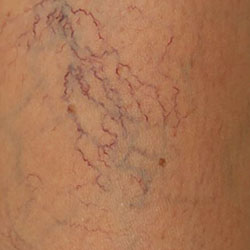
If you are susceptible to varicosities, you can also get spider veins, which are caused by a vein disease.
There’re no specific symptoms associated with spider veins beyond the appearance of the spider-like patterns through the skin of your leg.
A higher percentage of women with varicosities say that their legs become swollen, tired, achy, or feel heavy at the end of the day.
What are the Complications if Varicosities are Untreated?
- Skin ulcers that are prone to infection
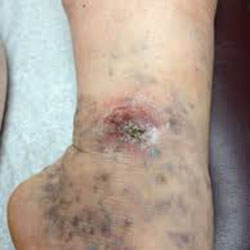
- Blood clots due to pooling of blood
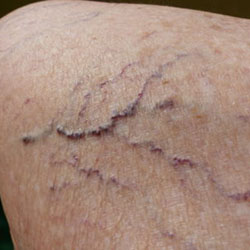
- Restless leg syndrome
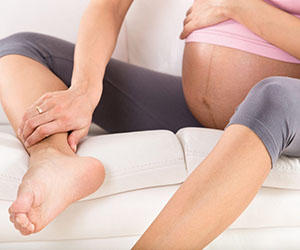
- Bleeding, swelling, and pain
Compression Stockings and Varicose Veins
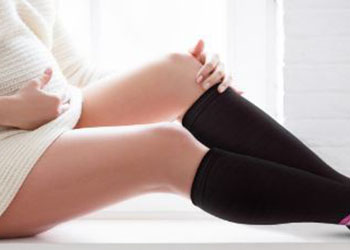
Compression following the treatment of varicose veins is a universally accepted intervention that decreases the likelihood of the condition worsening. Some people call these “Varicose Veins Compression Stockings”.
For example, during pregnancy, compression hose help prevent the occurrence of varicosities that would otherwise worsen due to increased hormonal influences and venous pressure.
Support stockings are usually recommended as a way of relieving symptoms. You can use them as a complete treatment, as well.
But there’s a considerable discussion as to how external support produces symptomatic relief for people with varicosities.
Some studies have evaluated the effects of elastic garments on ambulatory venous pressure and suggested that external elastic support may reduce ambulatory venous pressure.
What are Compression Stockings?
They’re elastic garments that are used to treat venous disorders. They are graduated garments with a higher pressure at the ankle and lower pressure to the knee and thigh.
Classes of Compression


There are three main classes of compression garments: one, two, and three, with one being the least compressive while three being the most compressive.
Class one garments are often adequate for mild cases, such as ankle swelling. The compression level for this class ranges from 15 to 20 mmHg.
Class two compression hosiery are better at preventing recurrent venous ulcer formation. The support level for this class ranges from 20 to 30 mmHg.
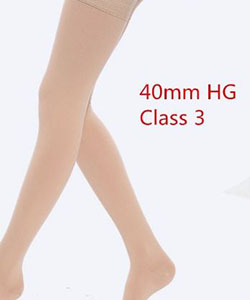
Class three garments may be needed to treat severe cases and must be prescribed by a medical doctor. The support level for this class ranges from 30 to 40 mmHg.
All classes of compression garments come in above and below the knee varieties. Below knee compression socks are usually suitable for ankle swelling.
But for uncomfortable varicose veins, thigh length stockings might be more suitable for improving subjective symptoms of the condition.
How Do They Work
Compression hosiery work by decreasing residual venous volume, reflux, and venous pressure of varicosities. But their advantage only lasts while they’re worn.
These garments are very effective at decreasing swelling and discomfort. They compress the leg surface with most pressure at the ankle.
This helps to decrease pressure up the length of your leg, forcing blood to flow from the small superficial blood vessels to the larger deep veins and finally back to your heart.
Recommendation for Pregnant Women
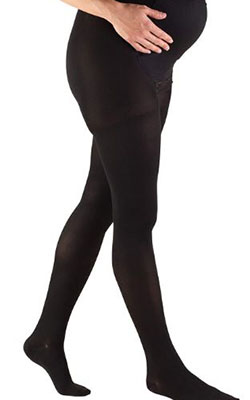
At the first indication that you are pregnant, we recommend you consider wearing a 10 to 30 mmHg graduated hosiery.
If you have a history of varicose veins, we recommend garments with a stronger compression, such as 30 to 40 mmHg.
Important Facts
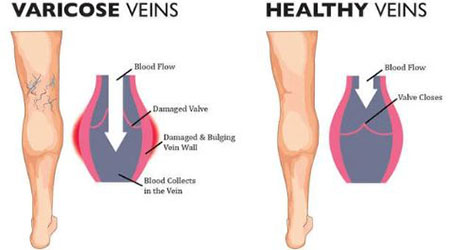
- Help prevent backflow of blood by supporting leaky valves
- Should be put on early in morning when your veins are at their lowest pressure
- Should be removed each evening
- You have to elevate your legs following removal
- Prolonged use of compression might decrease incidence of recurrent varicosities
- Avoid using regular stockings because they do not have any compression in them
- Long-term use of compression may impede the progression of chronic venous disease
Similar Articles on ComproGear:
- Compression Socks for Men
- Best Compression Socks for Swelling
- Sock Soothers
- Calf Compressors
- Compression Sleeves for Legs
- How Tight Should Compression Socks Be
- Best Compression Socks for Swelling
- Footless Compression Socks
- Doc Socks
- Compression Socks Good or Bad
- Wide Calf Compression Socks
- Doc Socks
- Can You Wear Compression Stockings 24 Hours a Day
- Easy To Put On Compression Socks for Elderly
- Toeless Compression Socks
- Medical Compression Socks
- Thigh High Compression Socks
- Sock Soothers
- Zipper Compression Socks
- Do Compression Socks Help Gout
Benefits of Compression for Varicosities
Potential benefits include:
- Improvement of venous symptoms
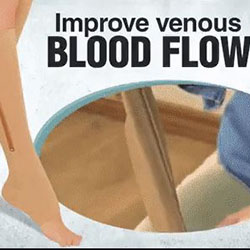
- Prevention of disease progression
- Concealment of visible varicosities
- Improved flow of blood in the lower extremities
How to Apply Your Compression Stocking
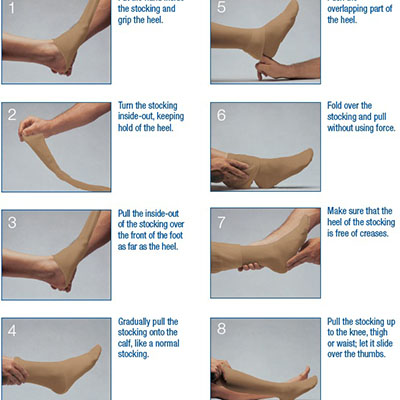
Before applying support stockings, we recommend removal of all hand jewelry. It’s also advisable to use form fitting gloves to assist with ease of application and help minimize damage to the garment.
The application process is quite simple:
- First, place your hand inside, grasp the heel pocket and pull inside out up to the heel
- Second, you both your hands to equally pull each side out and slide over toes and foot
- Third, continue sliding over the foot until the heel section is evenly positioned over your heel
- Lastly, position the rest of the stocking over your leg by pulling upward, and use both your hands to remove wrinkles
Your varicose vein compression socks are correctly applied when the heel is centered and the socks are smooth and uniform across the entire length.
Application with a Donning device
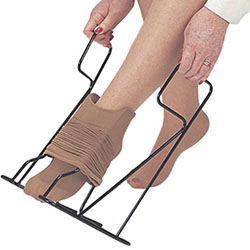
If it is challenging for you to apply your own support hosiery, you can always use a donning device.
This device is expertly designed, simple metal support that makes putting on support hosiery easier. The donning process is easy and it includes the following steps:
- Feed the stockings over the half-circle bracket located on the front side of the device so that the heel part of the garment is two to three inches below the top on the half-circle bracket
- Position the heel portion facing you and the toe of the hosiery facing toward the open side of the donning device
- Then place your leg into the base of the stocking until your foot is completely on the floor or until the heel is in place
- Use the metal grips on either side of the device to pull the rest of the support socks onto your leg.
- You can pull the donning device away once the hosiery is above your calf. Then pull up the remainder of the hosiery in case of thigh high or pantyhose styles.
What to Consider when Looking for the Right Product
If finding a high-quality pair of compression hosiery tends to be challenging for you, you can always consider our top-quality knee-high support socks.
But here are a few tips to help you with your search for the best product.
Choose a Type that Works for You
There are mainly three types of support garments that are suitable for treating or managing varicose veins.
- Support Pantyhose: They exert the least compression

- Gradient compression hose (over the counter): They exert moderate compression for boosting blood flow
- Gradient compression hose (prescription strength): These are normally prescribed by a medical doctor, and they exert firm compression
Know Your Measurements
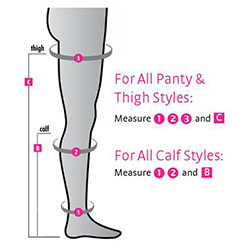
Measuring and fitting should be done first thing in the morning when edema or swelling is less of an issue.
Take firm and correct measurements without pressing your skin too much. This would be easier, if you ask someone else to take your measurements.
For accurate measurements, make sure you keep the measuring tape in a level position and note the measurements at each point.
The measuring procedure is simple, and it involves the following steps:
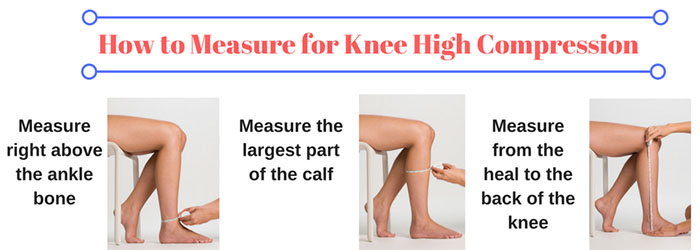
- Measure around the small surface of your ankle above your ankle bone
- Measure around the fullest part of your calf
- Measure the fullest section of your thigh (for thigh high stockings and pantyhose fitting
- Length measurement is taken from the bottom of the foot up to just under the bend of the knee (knee length) or at the gluteal fold (thigh length or pantyhose)
